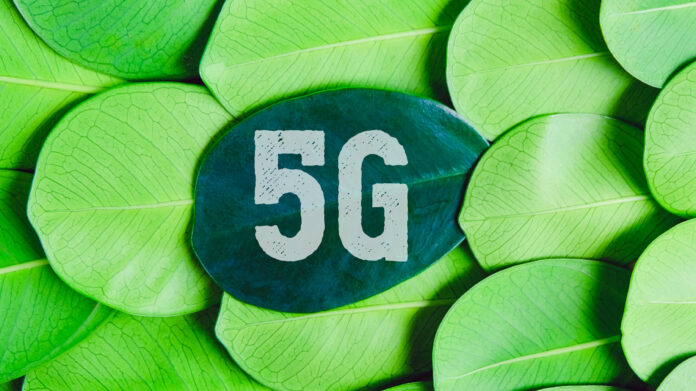Telcos are cutting emissions despite rising data use, but must double its pace to meet 2030 targets. Progress is uneven globally, with supply chains remaining a major hurdle.
In sum – what to know:
Net-zero progress – mobile industry emissions fell 8% from 2019–2023, but must fall much faster, at a rate of 7.5% annually to meet 2030 net-zero goals.
Decoupling growth – data traffic and connections keep rising, yet emissions are falling, even in China – showing clean energy efforts are working.
Scope 3 challenge – progress on Scope-1&2 operational emissions is decent, but invisible Scope-3 supply-chain emissions remain a problem.
Mobile operators must go faster if they are to halve industry emissions by 2030, and keep their 2050 net-zero targets in sight. But there are positive signs, maybe – says a new report from the GSMA. The mobile industry’s operational emissions fell by eight percent between 2019 and 2023, even as mobile connections grew by nine percent and data traffic quadrupled in the same period – and as total global emissions climbed by four percent.
“The mobile industry isn’t greenwashing or greenwishing – it’s green acting,” said the GSMA. The fifth edition of its annual Mobile Net Zero report suggests the industry has started to decouple emissions from data traffic and subscriber connectivity growth. Which sounds decent, in context. But it also warns that the industry has to effectively repeat the same trick – an eight percent reduction, achieved over four years – every year until 2030.
As such, it is hardly going fast enough; the environmental demand for cleaner energy and operations is outrunning the industrial supply – in the telecoms sector, like every sector. In fact, the GSMA says emissions must fall by 7.5 percent annually until 2030 – at more than twice the average annual rate achieved to date. But again, there are quite-hopeful signs: preliminary data for 2024 suggests a further 4.5 percent drop in emissions.
This is described as an “acceleration” on reductions in recent years, and part of a “remarkable” showing by the sector, but it remains a way short of the annual 7.5 percent decarbonisation target required in the period to 2030.
Telcos in Europe, North America, and Latin America are leading the charge, apparently – with reductions of 56 percent, 44 percent, and 36 percent since 2019, respectively. Operators in Asia and Africa are described as showing “increasing engagement”. China, the world’s largest mobile market with more than one billion 5G connections, posted its first ever annual decline – of four percent in 2024. This was driven by a “quadrupling of renewable energy use”.
“China’s progress is instrumental in achieving global net zero targets,” said the GSMA. The percentage of electricity from renewable power sources has almost tripled since 2019 – from 13 percent to 37 percent of the total energy used by global operators (which responded to the GSMA survey). The net result is to avoid 16 million tonnes of carbon emissions, it calculates.
A statement said: “The acceleration… is driven by actions to improve network energy efficiency and transition to clean energy, including solar and battery storage. Many operators are phasing out less efficient legacy networks and reducing their reliance on diesel generators. Some markets are seeing better renewable electricity access through policy support and market reform.”
It added: “But accelerated reductions… will require greater access across more markets… Hitting 2030 targets will require accelerated investment in clean energy (including solar and battery storage), policy support, and stronger supply chain collaboration, particularly around Scope 3 emissions, which still make up two-thirds of the industry’s carbon footprint.”
The GSMA report says Scope 3 emissions, from supply chains and manufacturing, account for more than two-thirds of the industry’s total carbon footprint and require attention. It said: “While transparency is improving, Scope 3 emissions remain a blind spot compared with operational emissions (Scopes 1 and 2), making them a critical challenge for operators with science-based targets, which require reductions across full value chain emissions.”
It points to growing momentum around circular economy initiatives, also. Around 90 percent of end-users surveyed by GSMA say they “value longevity and repairability”; nearly half will consider refurbished devices – which generate 80-90 percent fewer emissions than new ones. “While new device sales have slowed in recent years, the second-hand device market is growing rapidly, and is projected to be worth $150 billion by 2027,” it said.
Steven Moore, head of climate action at the GSMA, said: “Emissions are trending in the right direction, but the pace of progress must now double. This is a global effort, and it’s encouraging to see momentum building across every region. But to sustain this progress, we need broader support: better access to renewables, more policy certainty, and stronger collaboration across the ecosystem. Supply chain emissions, which make up most of our industry’s footprint, must also be addressed – and climate transition plans will play an increasingly important role in navigating what comes next.”
The report was published a couple of weeks back, ahead of MWC25 Shanghai. In total, 81 operators, responsible for nearly half of global mobile connections, have science-based targets; 77 have joined the GSMA’s climate action taskforce.

